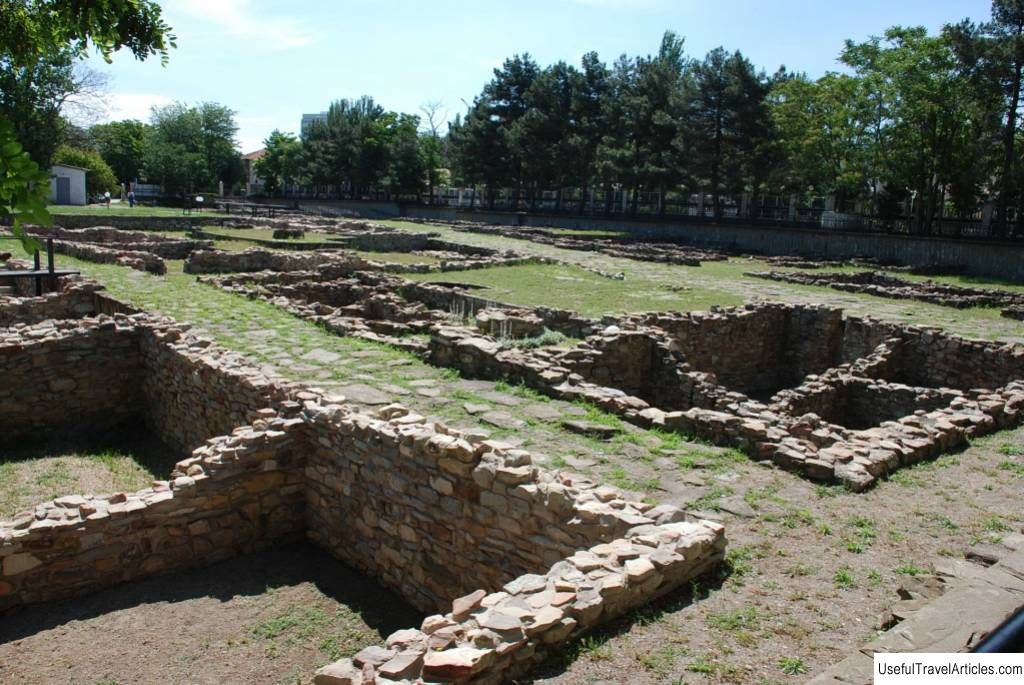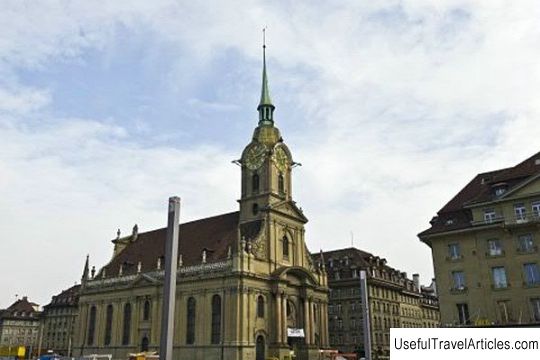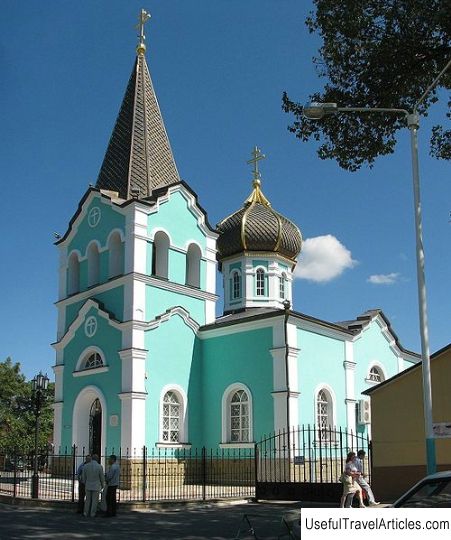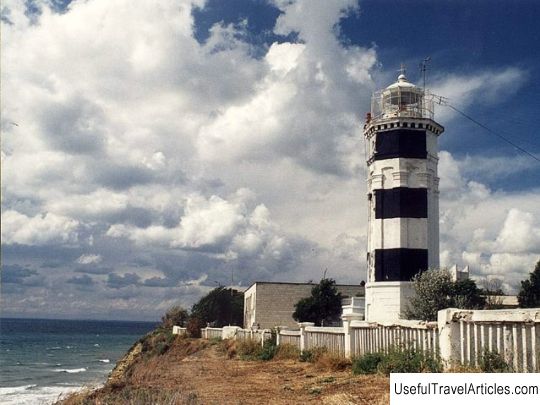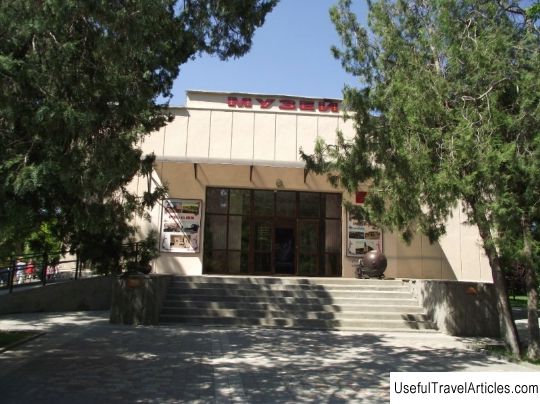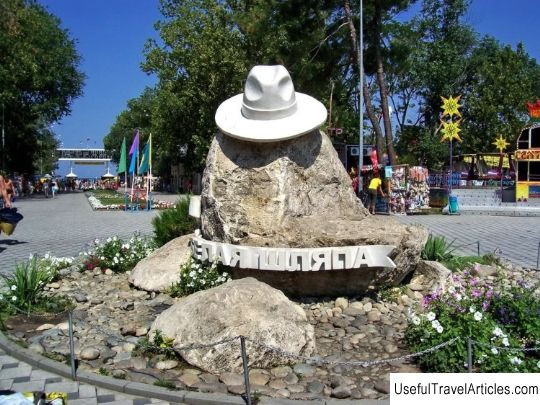Gorgippia Open Air Museum description and photos - Russia - South: Anapa
Rating: 8,1/10 (1698 votes) Gorgippia Open Air Museum description and photos - Russia - South: Anapa. Detailed information about the attraction. Description, photos and a map showing the nearest significant objects. Photo and descriptionRight in the center of Anapa there is an archaeological open-air museum - the ancient city of Gorgippia, which was once located on this place. Remains of city buildings, walls and towers, burials and temples - all this takes us two thousand years ago, to the time of the heyday of this city. GorgippiaThe city of Gorgippia existed IV century BC BC to AD 240 er . It was the capital of the Black Sea Sindi tribe . Not much is known about Sindh - for example, we know almost nothing about their language. But it is known that they were one of the most numerous Black Sea tribes and willingly made contact with the Greeks. From the IV century. AD the Sindi form their own state - Sindica . They minted their silver coin used their own weapons - their settlements can be easily distinguished by their characteristic swords. From the 4th century onwards, Sindika fell under the influence of the Bosporus kingdom, and then became part of it. The governor of the city after the coup was Gorgippus , the brother of the Bosporan king Leukon I , and the capital of Sindica is renamed in his honor to Gorgippia. Under him, the city is not only got a new name. It was significantly re-planned, construction of new harbor and temples began. Here a temple in honor of Artemis is being built, they continue to mint their coins, make wine and pottery and successfully trade with the entire coast. The city's population is mixed - some speak Greek, some - Sarmatians and Scythians. In the 1st century BC. the territory of Crimea entered Kingdom of Pontus . After a series of Mithridates wars, the Black Sea region falls under the influence of Rome. Gorgippia becomes an ally of Rome, in fact obeying him, but maintaining independence in the field of domestic politics. The kings add the phrase “friend of the Romans and Caesar” to their title, and the city introduces the cult of Roman emperors . The year 240 is officially considered the end of Gorgipia. No documentary evidence of this has survived. But archaeologists say with confidence: about then there was a huge fire , which destroyed almost all city buildings. Most likely, this is due to the invasion of the Crimea by the Goths tribes - apparently, then the city was destroyed. However, archaeologists say that this was not yet the final death. Life in the city continued until the 4th century. Gorgippia was completely destroyed by the invasion of Attila . For almost a millennium, the city stood in ruins until the Genoese came here and built their fortress, which gave rise to modern Anapa. Archaeological reserveWild predatory excavations were carried out in this area, as throughout the coast, from time immemorial. The first scientific research began in the middle of the 19th century at the initiative of the Odessa Society of History and Antiquities. At the beginning of the 20th century, Professor N. Veselovsky is a famous historian and archaeologist. In 1909, he organized a small museum in the city - Cabinet of Antiquities , and an ancient crypt excavated nearby was transported to the city garden. The Anapa Museum was almost completely destroyed twice: after the 1917 revolution and after the Great Patriotic War. Its current history begins in 1945. In the post-war years, archaeologists begin to discover the ruins of Gorgippia. First we found a necropolis - it was opened during the construction of a new city cinema. From 1961 to 1996, the Anapa archaeological expedition officially works here. During this time, several hundred burials were examined in Anapa itself and its environs, the ruins of the city, temples, houses, estates of the nobility in the vicinity of the city. The current museum - an open-air archaeological reserve museum - was established in 1977, and in 2009 it celebrated its centenary. Now it occupies about two hectares. This is the northeastern part of the city of Gorgippia, about the fortieth part of all buildings. The city layout, the remains of houses and streets are clearly visible. The Greek cities of the Black Sea region were built up regularly: with square blocks and parallel streets. The houses were square, adobe on stone foundations. They were covered with tiles. Each successive ruler put his own mark on the tiles, so that the date of construction can be accurately dated by this mark. The houses were quite high - two or even three stories high. The reconstruction of such a house can be seen in the museum. One of the most interesting houses in Gorgippia is The Merchant's House . This building had two whole underground warehouses for storing food and goods, they were fed up through hatches in the floor. Grain storage pits were dug in one of the cellars. One of the most interesting exhibits is a 3rd century marble slab with the names of the winners of the Hermes competition carved into it. They competed in four sports, of which only three were able to read on the slab: long-distance running, torchlight running and wrestling. Among the participants, judging by the names, were both Greeks and Sarmatians and Scythians. You can see part of the city fortifications . The rich city has been surrounded by a wall since ancient times, but fragments of the walls of the 2nd-3rd centuries have survived. AD with traces of the then fire. This is part of the wall the thickness of which reaches almost three meters and a square powerful tower, built of hewn stones. In the museum you can see a commemorative inscription telling about the construction of these walls. Part of the territory is occupied by a exhibition of sarcophagi and tombstones - these are the remains of the city necropolis. Almost all the burials have come down to us already plundered, but the stone sarcophagi themselves with various carvings and holes that the robbers made in them have survived. MuseumThe inside of the Archaeological Museum is decorated as an antique building with snow-white columns . There is also a town square with a statue of the ruler, and two halves of a typical Greek house - women and men, and a potter's shop with amphoras, kilikas and other vessels, and a blacksmith's shop with metal products. The museum displays archaeological finds from the city. The most interesting exhibit is things from the "Crypt of Hercules" . In 1975, a crypt was found in Anapa with perfectly preserved frescoes depicting the exploits of Hercules. Now the frescoes have been carefully removed from the walls of the crypt and are displayed in the museum, and the hewn stone blocks themselves were transported to the territory of the reserve and can be seen in an open exhibition. Next to the "Tomb of Hercules" were found two undiluted burials of the 2nd-3rd centuries BC with many different utensils and gold jewelry. Were found rings, a wreath of golden leaves, bracelets, brooches ... Most of all this can now be seen in the museum in Krasnodar, but some of the items are also on display in Anapa itself. In the museum's collection, you can see many terracotta figurines, marble and bronze images, painted antique ceramics, and household items. In the first place in the exposition is the statue of Tyukhe - the goddess of fortune, who was worshiped in the city along with Hermes. There is also a permanent exhibition that is not related to the ancient heritage. This is the memorial office of the famous mother of Mary, Elizaveta Yurievna Pilenko (Skobtsova) . In Anapa, she spent her childhood and youth, her first poems were dedicated to the Crimea and the Black Sea. Since 1920, she found herself in exile in France and took monastic vows there - we know her as a member of the French Resistance. She died in 1945 in a concentration camp. The descendants of this family transferred the things left over to Anapa. Another part of the exhibition - things, devotees from the Pukhtitsa Assumption Monastery in Estonia, which she visited and which has preserved the memory of this. Interesting factsThe second most famous Sindi settlement was in the Kuban - we know it as a Seven Mound Settlement In the summer, the museum hosts an interactive exhibition "Living History": reenactors showcase ancient crafts, hold master classes and tell about the life of the ancient city.     We also recommend reading City Walls description and photos - Turkey: Side Topic: Gorgippia Open Air Museum description and photos - Russia - South: Anapa. |
